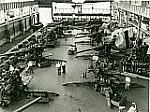
The Extraordinary Christmas of 1935
by John R. Cassleman III
published: February 20th, 2010
Imagine walking along Monroe Ave. a few days before Christmas in 1935 when suddenly a herd of newsboys from both the morning Herald and evening Press charge past you waving extras over their heads and yelling at the top of their lungs, “READ ALL ABOUT IT, GM TO BUILD HERE, MERRY CHRISTMAS!” In the middle of the Great Depression that news jolted this community, one starved for any sign that things were going to mend economically. But this time, it was not just another rumor. Something was really going to happen and soon. Many hoped it signaled a return to the life they’d lived before 1930. (Find more information to your right in Related Items)
John R. Cassleman began work as the Industrial Commissioner for the Grand Rapids Association of Commerce, later the Grand Rapids Chamber of Commerce, in November of 1929 about two weeks after the stock market crash. While "Black Tuesday" marked the end of nearly a decade of economic vitality and growth, it was considered by most as another shock-wave. They were survivable as history had painfully taught many, including Cassleman who'd lost much of what he owned in the 1920-21 commodity crash.
Despite the Depression, General Motor's sales had tripled from 1933 to nearly a million automobiles by 1936 due to a radical change in design. A one-piece rounded roof constructed of steel, called a 'turret top,' was one of the streamlined modern features that signaled the end of the 'classic' era. In 1934 General Motors began a $250,000,000 modernization and expansion program.
The Grand Rapids area needed a plant of this stature badly, and it was Cassleman's job to go get it. In October of 1935 Alfred P. Sloan, GM president, the two Fisher brothers, and other GM executives arrived here secretly to survey possible properties. Only three men, Cassleman, George Welsh, former city manager, and George Tilma, Wyoming Township supervisor, knew about the negotiations for the GM project. Not even Cassleman's employer, the Association of Commerce, was made aware of it.
GM purchased 77 acres of land, bounded on the north by Allen Road (now 36th Street), on the east by Buchanan Ave., and on the west by the Pennsylvania Railroad tracks, on Dec. 14, 1935 for $25,000. The adjacent railroad was an important factor in selecting that particular property. On December 20th, GM allowed Cassleman to tell the city, and instructed him to frame the announcement as a Christmas present to the citizens of Grand Rapids and its environs.
On Jan. 31, 1936 piles were driven and foundation work started. Nearly two thousand local men began to work on the massive construction project. Many of them reported to the site without warm clothing or good boots. Earl Robson, who had recently started his clothing store on Division Ave., quickly solved their dilemma. He donated clothing and boots that many of them needed because few could pay him. Most, however, paid Earl back as soon as they got their paycheck.
On April 6 a line of applicants for jobs in the new factory stretched out for a mile along Buchanan Ave. with another extending to Division Ave. Some men quit their existing jobs to stand in line that day, praying they would be among the 2000 fortunate enough to be hired. Being hired by GM likely meant a better life for a man's family, especially during the Depression.
Just short of a year from the date the Christmas present was delivered, 2100 employees were working in that plant and 85 to 90 railroad carloads, a full trainload, were being shipped from it every day. A state of the art plant, and the largest of its kind in the GM system, the 400,000 square foot facility cost General Motors $7,000,000. The presses, among the largest in the world, extended two stories below ground and four stories above it.
The establishment of the first General Motors plant in 1936, then known officially as the Grand Rapids Stamping Division of Fisher Body, but which most called the 36th St. plant, had a dramatic, positive and immediate impact on metropolitan Grand Rapids during the Depression. Its influence rippled through this community then and for close to 80 years afterward like a powerful wave of energy. It will be sorely missed by those who depended on that amazing 1935 Christmas gift for their livelihood and by many who didn't.
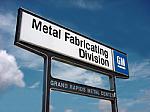
For months in 1935, during the Depression, the news that General Motors would open a new plant in Grand Rapids was kept secret under penalty that the project would be cancelled if news was leaked. Finally, announced in December, it was GM's Christmas present to the city.
Bibliography
Books Available from the Grand Rapids Public Library
- Farber, David R. Sloan Rules: Alfred P. Sloan and the Triumph of General Motors. University of Chicago Press. 2002
- Fine, Sidney. Sit-Down: The General Motors Strike of 1936–1937. University of Michigan Press, 1969.
- Lydens, Z. Z. The Story of Grand Rapids. Grand Rapids: Kregel Publications, 1966.
- Olson, Gordon. Grand Rapids Renewed. Grand Rapids Historical Commission, 1996
History and Special Collections Dept. of the GR Public Library
- Grand Rapids Chamber of Commerce Records
- John R. Cassleman's Assoc. of Commerce log books; 1929, 1930, 1931, 1937, 1938

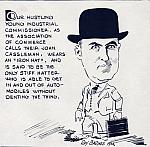
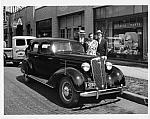
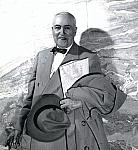
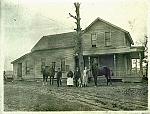
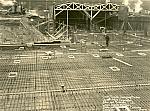
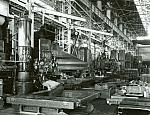
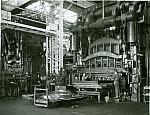
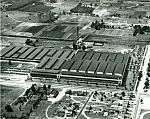
 facebook
facebook



